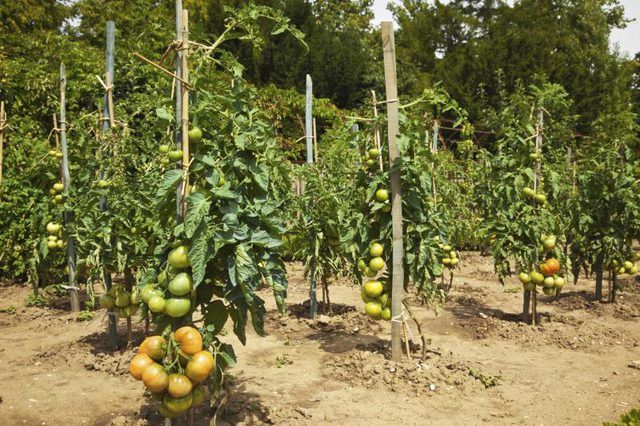Bulbs
Flower Basics
Flower Beds & Specialty Gardens
Flower Garden
Garden Furniture
Garden Gnomes
Garden Seeds
Garden Sheds
Garden Statues
Garden Tools & Supplies
Gardening Basics
Green & Organic
Groundcovers & Vines
Growing Annuals
Growing Basil
Growing Beans
Growing Berries
Growing Blueberries
Growing Cactus
Growing Corn
Growing Cotton
Growing Edibles
Growing Flowers
Growing Garlic
Growing Grapes
Growing Grass
Growing Herbs
Growing Jasmine
Growing Mint
Growing Mushrooms
Orchids
Growing Peanuts
Growing Perennials
Growing Plants
Growing Rosemary
Growing Roses
Growing Strawberries
Growing Sunflowers
Growing Thyme
Growing Tomatoes
Growing Tulips
Growing Vegetables
Herb Basics
Herb Garden
Indoor Growing
Landscaping Basics
Landscaping Patios
Landscaping Plants
Landscaping Shrubs
Landscaping Trees
Landscaping Walks & Pathways
Lawn Basics
Lawn Maintenance
Lawn Mowers
Lawn Ornaments
Lawn Planting
Lawn Tools
Outdoor Growing
Overall Landscape Planning
Pests, Weeds & Problems
Plant Basics
Rock Garden
Rose Garden
Shrubs
Soil
Specialty Gardens
Trees
Vegetable Garden
Yard Maintenance
Why Are My Tomato Plants Turning Brown?
Why Are My Tomato Plants Turning Brown?. It's hard to top the satisfied feeling you get when you pick your own luscious, garden-grown tomatoes (Lycopersicon esculentum), which are grown as annuals in all parts of the United States. But it can be frustrating to see plants that start out healthy begin to develop brown leaves that increase as the...

It's hard to top the satisfied feeling you get when you pick your own luscious, garden-grown tomatoes (Lycopersicon esculentum), which are grown as annuals in all parts of the United States. But it can be frustrating to see plants that start out healthy begin to develop brown leaves that increase as the season progresses. Catching the problem early and identifying its cause can preserve your crop while also helping prevent a recurrence in the next season.
Browning From Fungus
Loss of foliage on a tomato plant can interfere with its ability to produce energy needed for fruit production, so the cause of brown leaves needs to be identified as soon as it appears. Several fungal disorders cause leaves to turn yellow first, then eventually becoming brown and dry; this often starts at the lower part of the plant. These include early blight and Septoria leaf spot; two other disorders, Fusarium wilt and Verticillium wilt, may also cause streaking of the plant's stems in addition to leaf problems. If plants are affected by one of these fungal problems, you might also see soft brown spots, called cankers, that appear on stems near the surface of the soil.
What to Do About Fungus
If brown leaves develop on the lower parts of young tomato plants, trim these away and destroy them, using shears that you wipe with rubbing alcohol between cuts to prevent spreading the disease. To keep foliage dry and slow fungal growth, water the plants early in the day with a soaker hose or drip irrigation. Avoid using organic mulch, which can promote fungal growth; instead, use plastic mulch, spreading it under plants once the soil has warmed. Eliminating nearby weeds also helps keep down humidity and improve air circulation.
Several strategies can help prevent fungus from reappearing the next season. For example, choose cultivars such as "Better Boy" and "Supersonic" that are resistant to fungal wilts, space seedlings about 20 inches apart to provide good air movement and clear away and destroy all plant debris at the end of the current season. If possible, locate plants in different spots each year, because fungus can overwinter in soil.
Pest Problems
Some pests that attack tomato plants might cause browning of leaves, especially at the edges of leaf parts that show evidence of chewing. This sort of damage can occur anywhere, including on new shoots and young leaves high up on the plant, helping distinguish it from fungal damage.
Possible pests include whiteflies and aphids, which are whitish flying insects and tiny greenish, crawling insects, respectively. They also leave behind a sticky residue called honeydew. Control these by spraying the plant until dripping with insecticidal soap, diluting 5 tablespoons in 1 gallon of water; repeat the spray as needed. You can harvest fruit after spraying, but wash the tomatoes well to remove any residual soap before eating.
Another type of insect called a psyllid can feed on leaf sap, causing yellowing and eventual browning of leaves. Immature nymphs appear on leaf undersides as small, yellow or green dots. Control these by dusting foliage with sulfur, available as a dry powder at nurseries. You can harvest fruit after dusting, but wash away the powder before eating.
Other Possibilities
Some cultural problems might cause browning of leaves on a tomato plant, especially if you see leaf edges turning brown first, with brown color gradually spreading to the rest of the leaf. Called leaf scorch, this can indicate that the plant's not getting enough water, especially during summer when sun is extra-strong. Tomatoes need at least 1 inch of water weekly for good growth, including rain, so provide supplemental water as needed. Once the problem's corrected, new leaves should appear green and healthy.
Over-fertilizing a tomato plant can also cause leaf scorch because salts from the fertilizer build up in the soil, interfering with the plant's ability to take up water. Feed each plant only twice, once when standard-sized tomatoes are 1 inch in diameter or when you first see green "cherry" types. Feed again when first ripe fruit appears. Each time, use 1/2 cup of a granular, 5-10-5 formula, scratching it into the top inch of soil near the plant, then watering well.